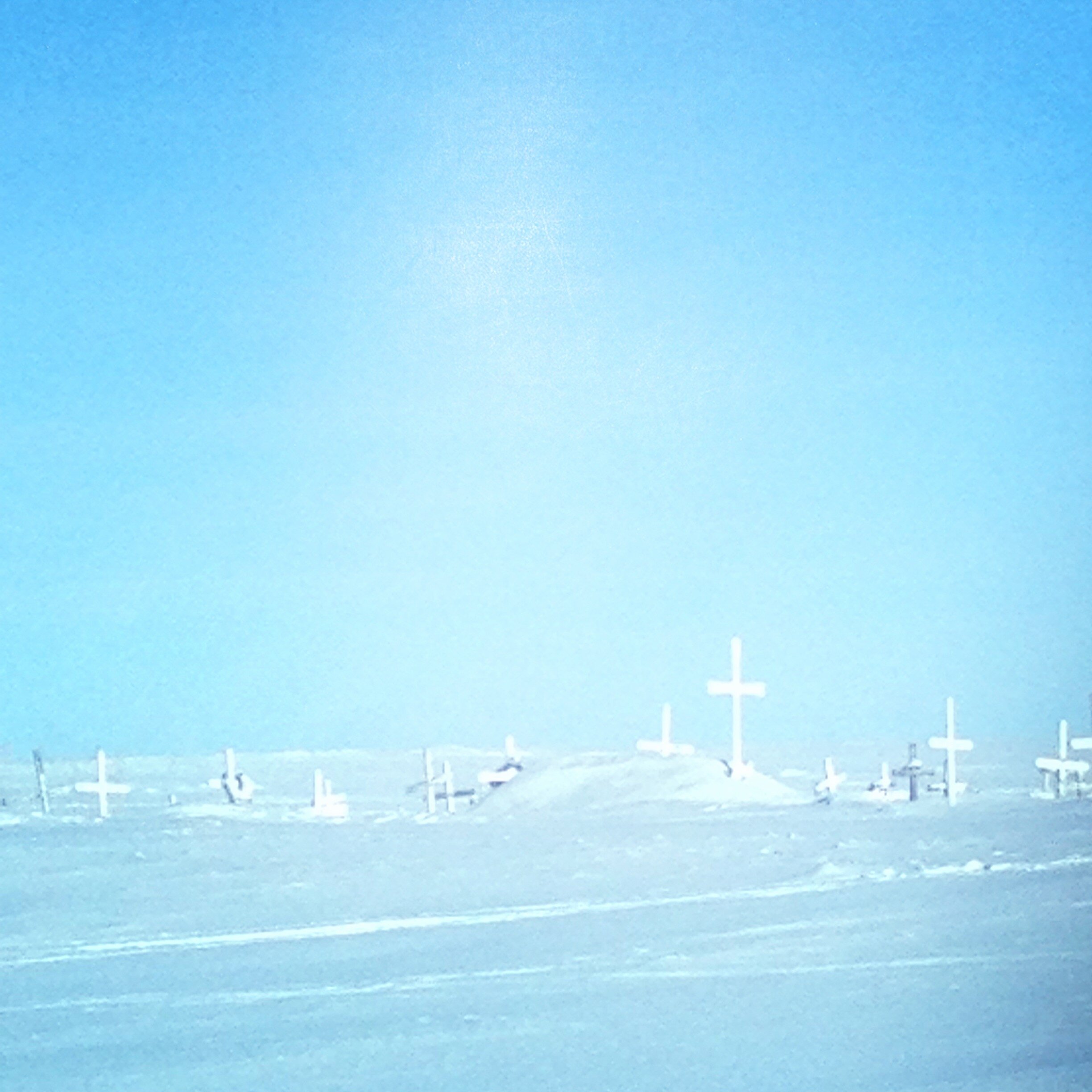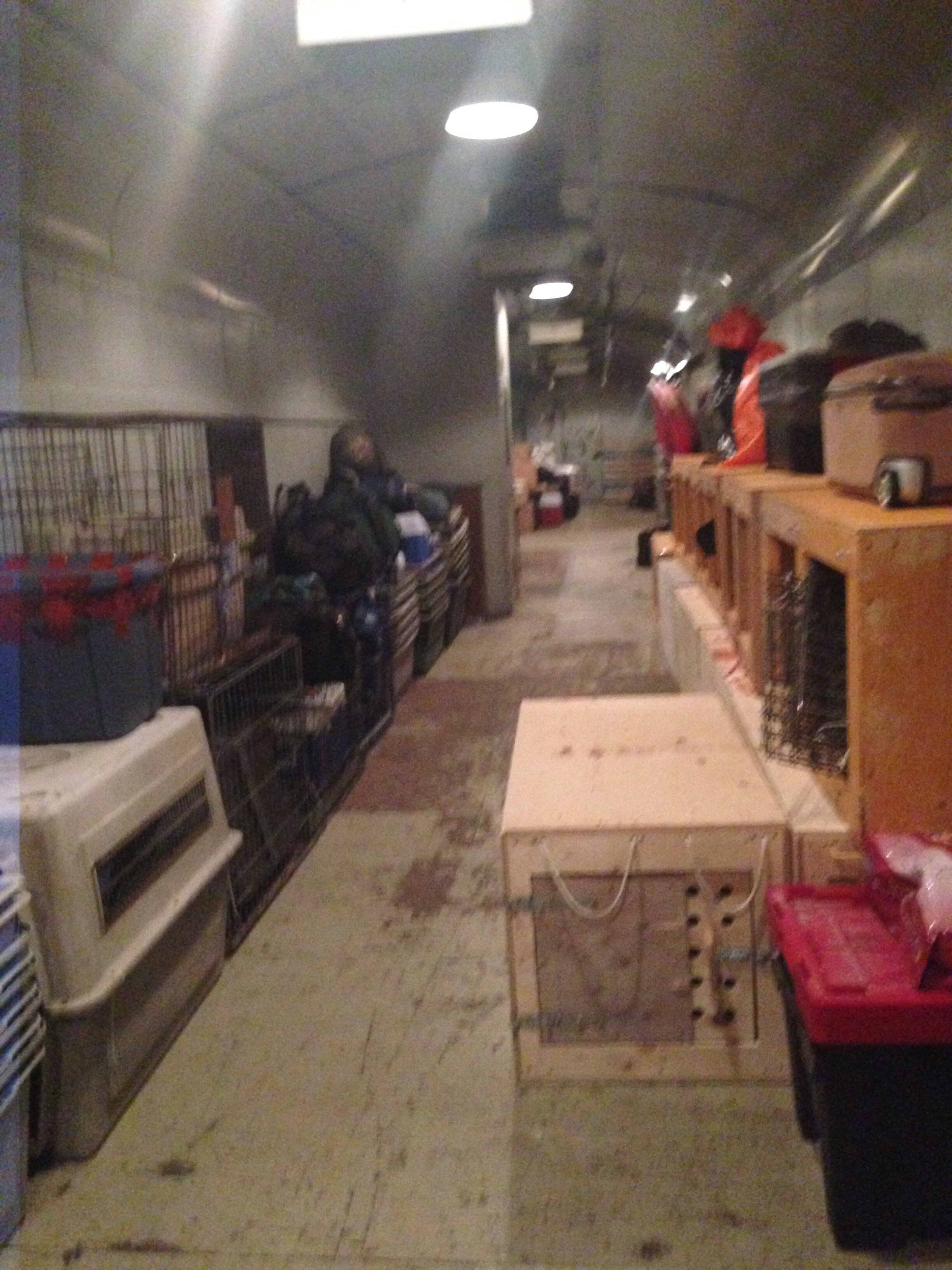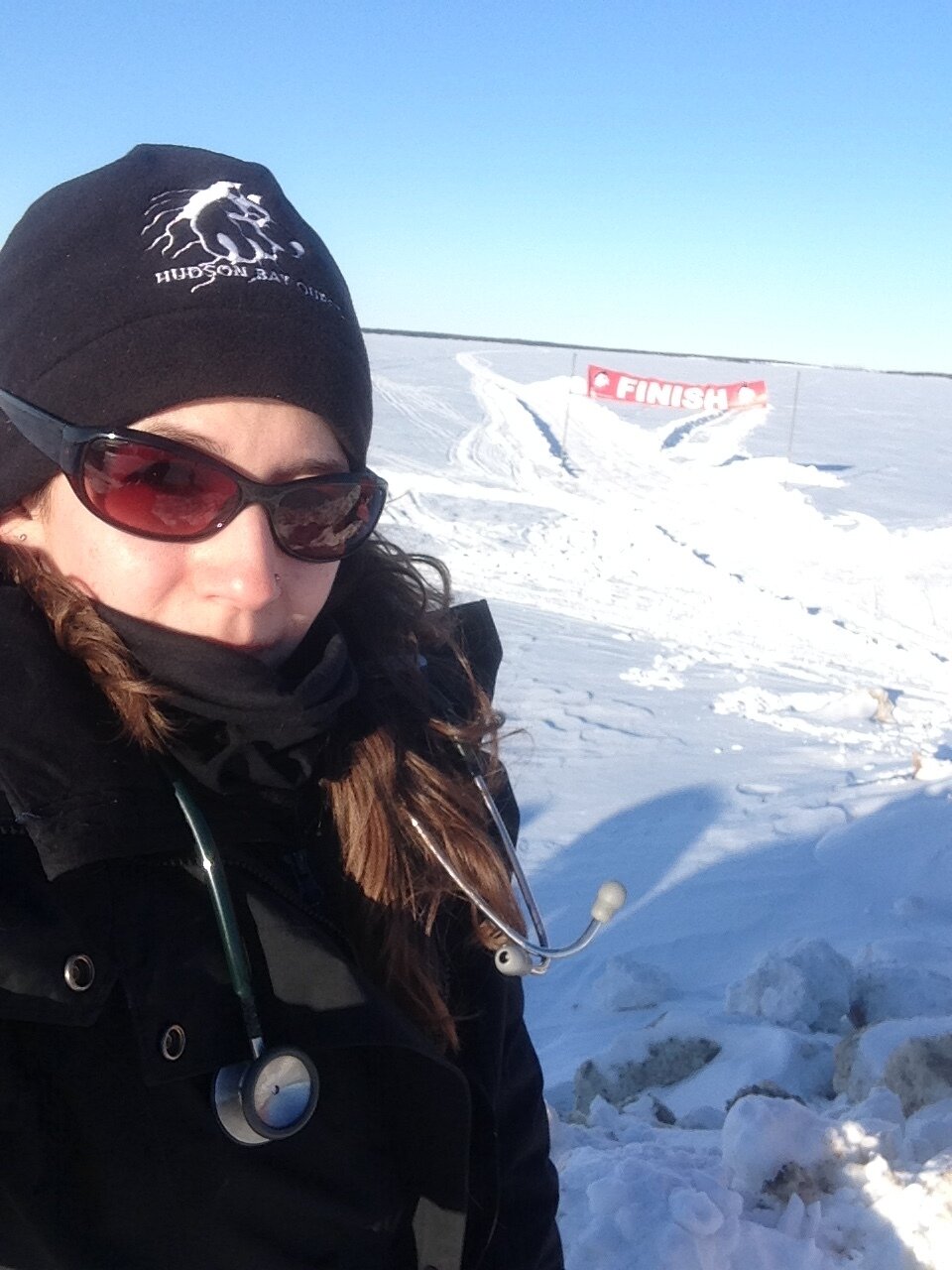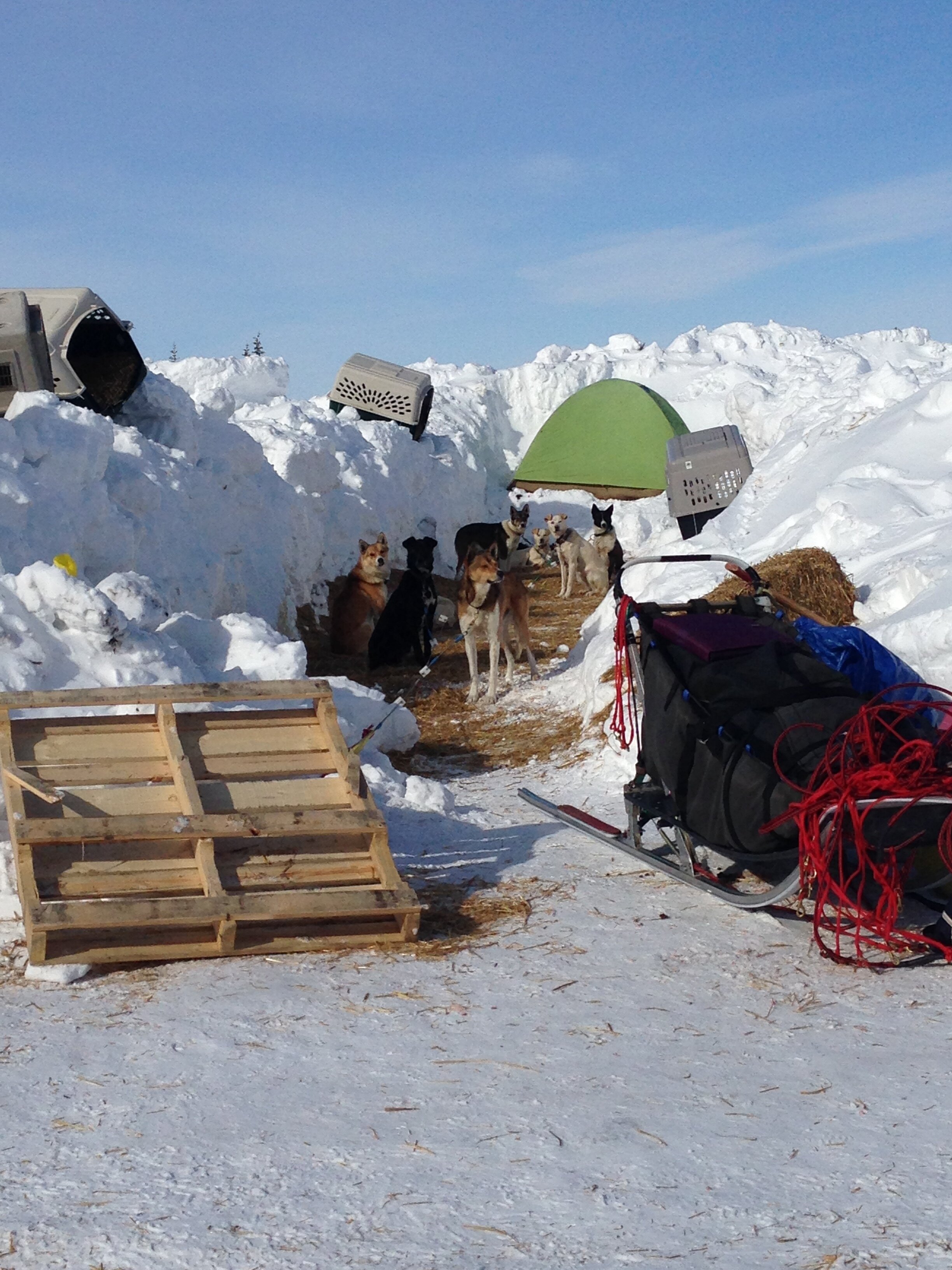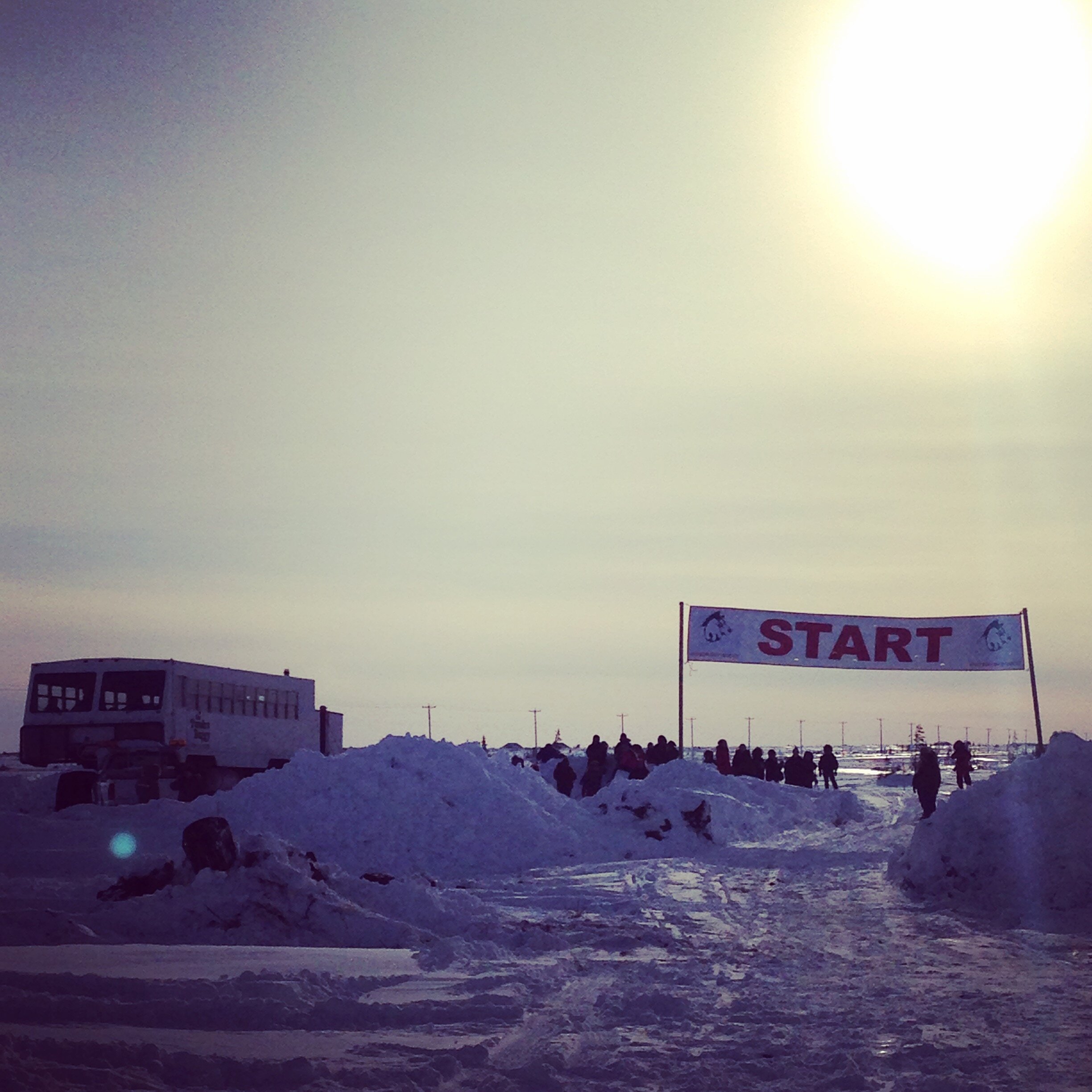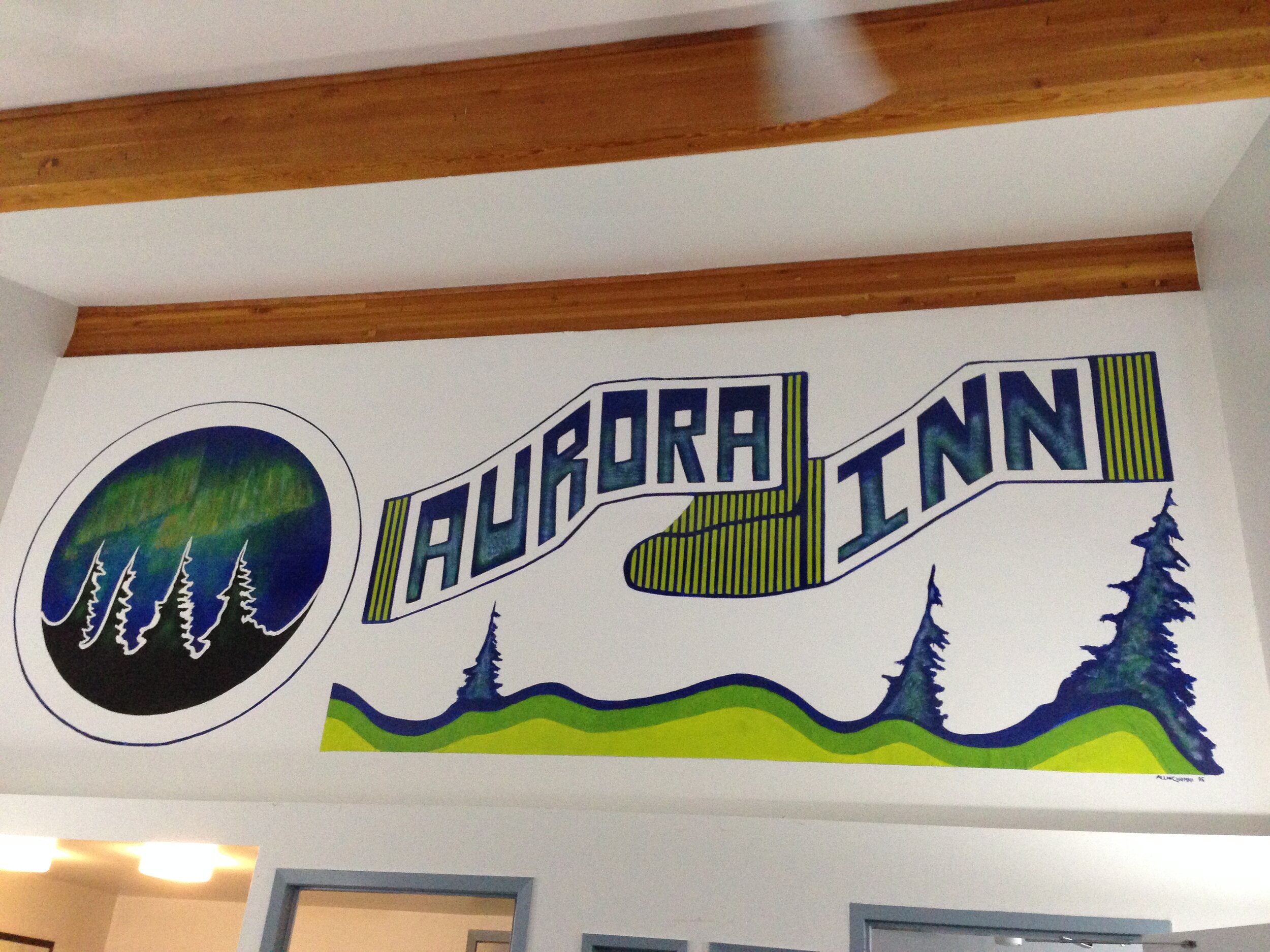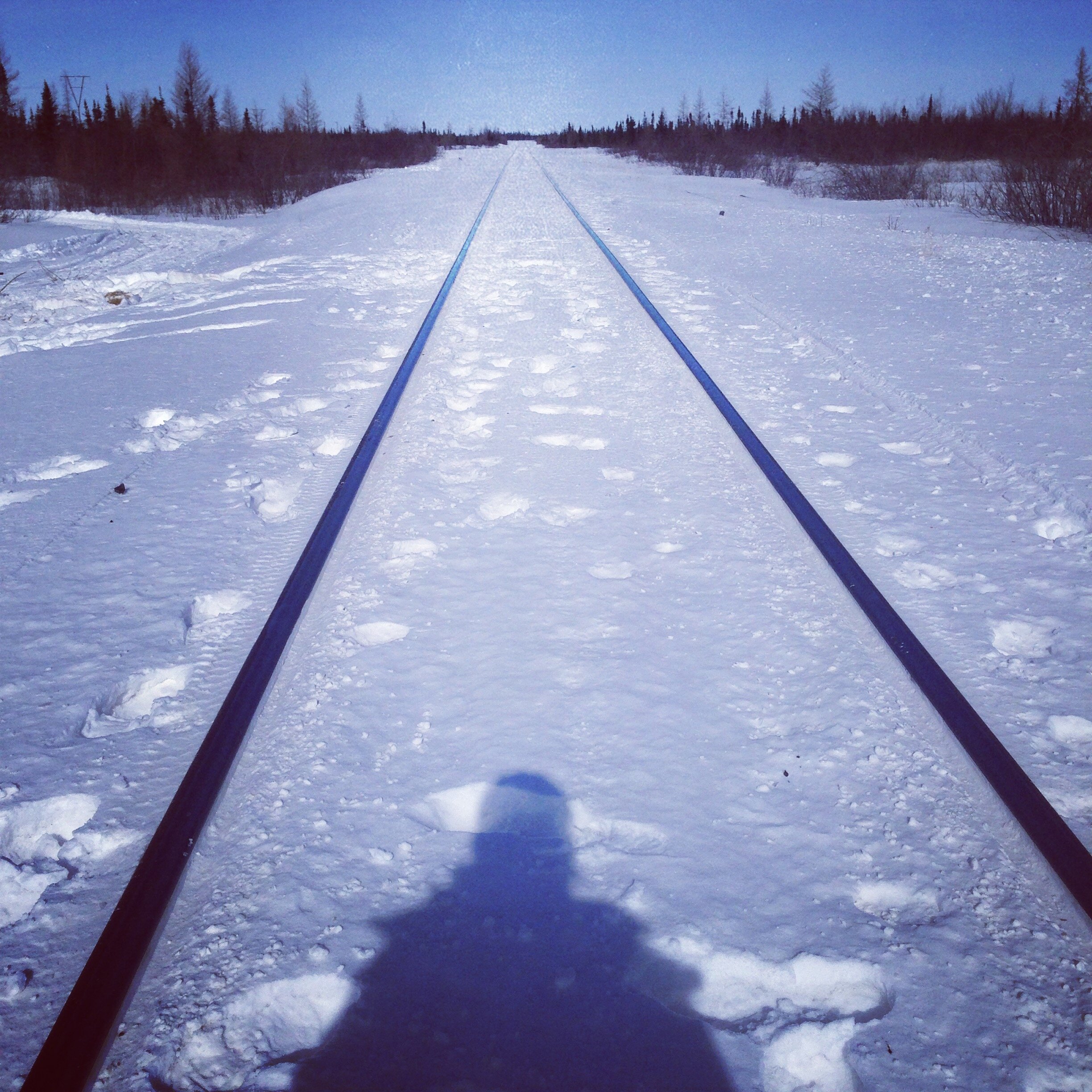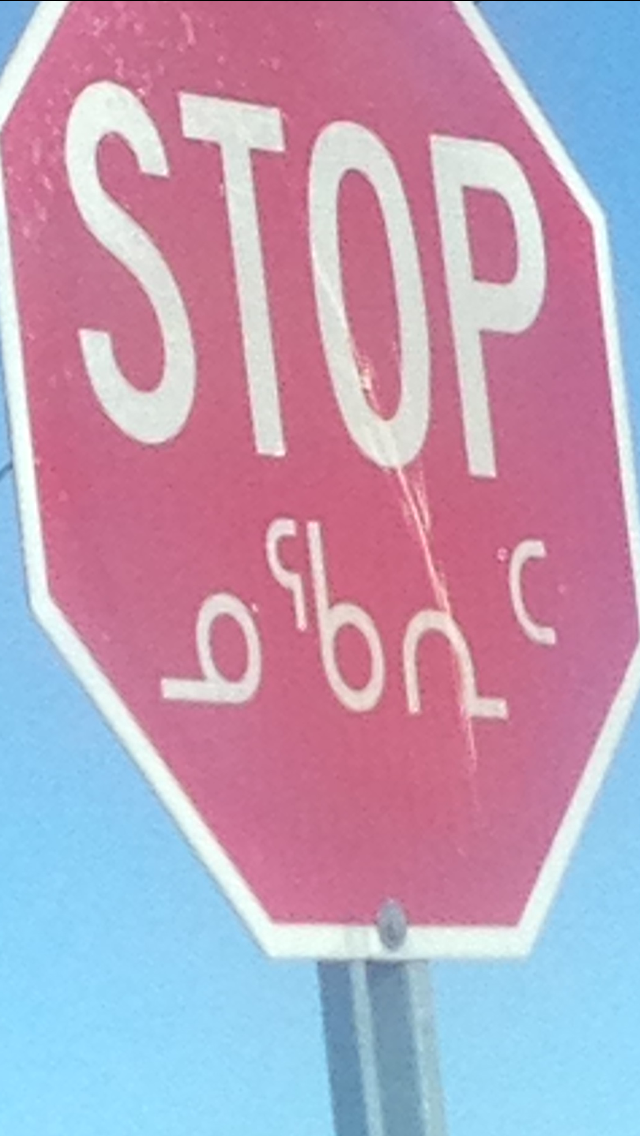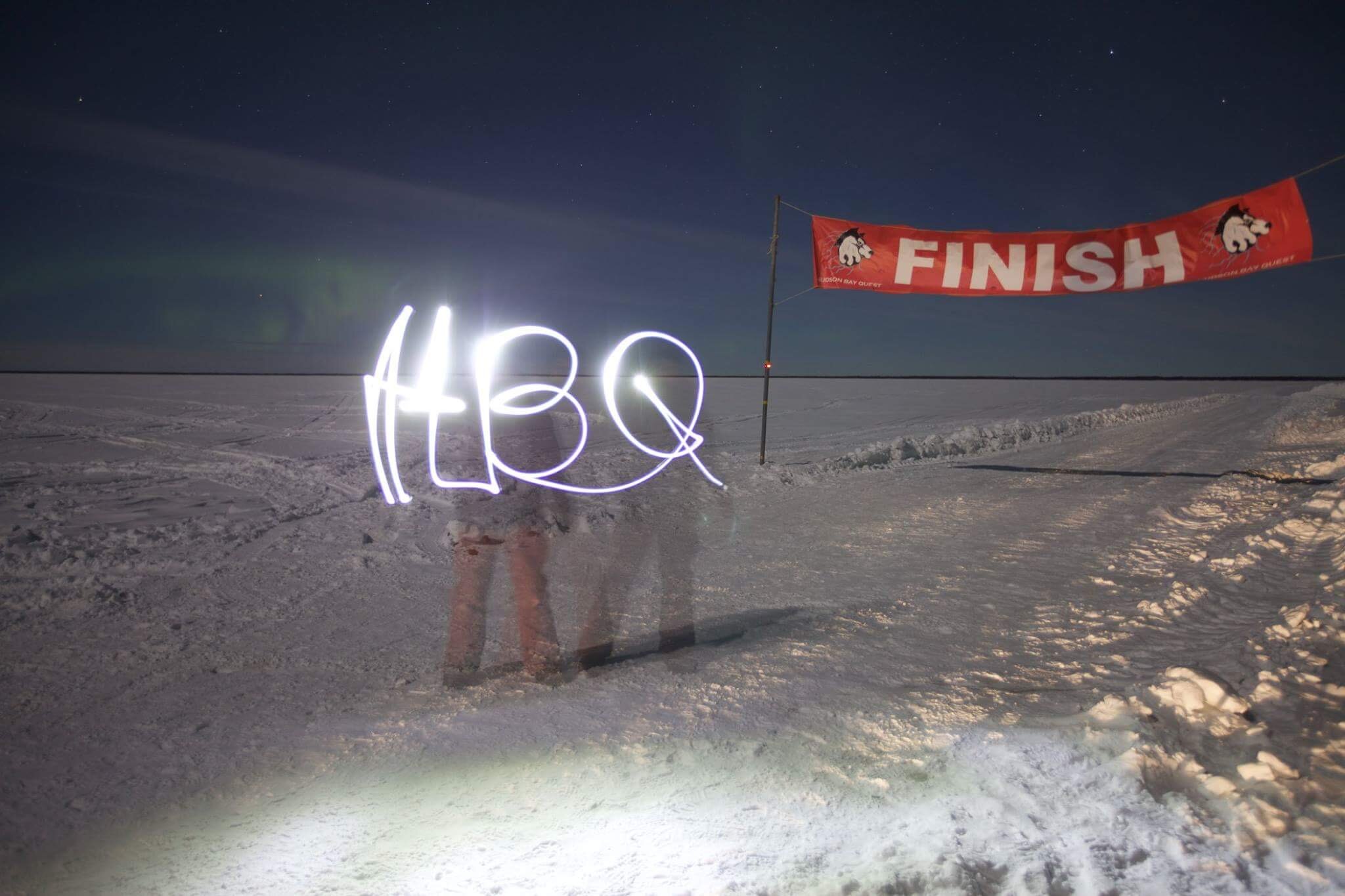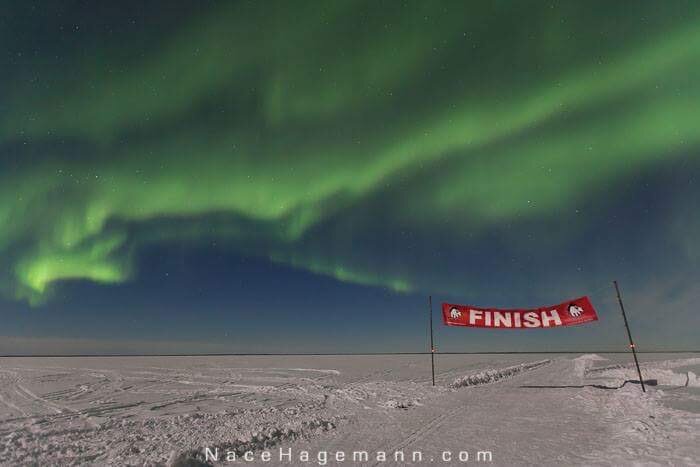Hudson Bay Quest: Planes, Trains and Snowmobiles
In November of 2012 I received a message from one of my best friends in Gillam, Manitoba. Mireya was asking me whether I would be interested in being a volunteer veterinarian for a sled dog race called The Hudson Bay Quest. Never one to turn down an opportunity, I asked for her to pass my name along to the head veterinarian to find out more. It crossed my mind that this was mostly a ploy on Mireya’s part to get me to visit her in Gillam. Not that the draw of one of my best friends isn’t enough to travel along the most northern highway, designated the worst highway by a Manitoba-wide vote, to the most northern reaches of said terrible road to a town known for its remote location…….But you know what I mean. So as I learned more about this sled dog race, that travels between Gillam and Churchill, Manitoba, I agreed to sign up knowing that I would either love it or hate it. But in the very least, I would end up with a story to tell and a chance to see my dearest friend.
Before I get too much further, let’s remove the air of mystery. Yes I loved it, and yes I have returned to the Hudson Bay Quest every year since my first year. I am lucky enough to now be one of the head veterinarians, a post that I am honoured to hold.
The Hudson Bay Quest is a unique adventure race. It is a completely self-sufficient wilderness adventure, meaning that once the musher and their team of ten dogs leave the start line, they must carry with them all of their supplies required to finish the race 36-48 hours later. This may not sound initially impressive, but let’s put it into perspective. The team travels from Gillam to Churchill (or in the reverse order depending on the year), which is 220 miles of wilderness, tundra and frozen river trail. Temperatures can plummet to -45 degrees Celsius, with a roaring windchill chasing their heels. Winds can pick up to more than 80km/hr causing whiteout conditions, forcing the musher and their team to camp together, sharing a tent and shelter until the weather has passed. The trail traverses polar bear denning areas, caribou and wolf territory, and so the chances of a wildlife encounter are high. There are checkpoints along the way, patrolled by members of the Canadian Rangers who use the race as a formal military training exercise. They provide protection, search and rescue service, and are an integral component of keeping our race safe and running. At every checkpoint the musher has the option to rest, with the exception of the mandatory rest stop called M’Clintock (more on that later).
I can imagine how what I have described thus far may not sound appealing to everyone, or even to the majority of readers. But before I grace you with my best account of the almost indescribable beauty of the landscape, the people and the dogs in this race, I thought it was necessary for you to understand the harsh conditions on which this beauty is juxtaposed. But let me set the stage just a little further.
The volunteer vet team consists of four veterinarians and a veterinary technologist. We are responsible for the health and safety of the elite canine athletes that make up each dog team. We perform pre-race examinations to ensure they are fit to race. We then examine each dog two more times: once at the mandatory rest stop (M’Clintock) and then again at the finish line. We serve as both sports medicine doctors and paramedics if required. I am so lucky to be able to brag about the health of my mushers’ dogs. They are so fit and athletic. Injuries are few, and usually more so soft tissue strains involving the shoulder or wrist. The mushers will alert me to any concerns they have and if we agree that a dog should no longer race, they are dropped from the race at M’Clintock and escorted to the finish line in the warmth of a straw-bedded kennel in a train car. To say the mushers are attentive owners, is the world’s biggest understatement. Their dogs are their family and their teammates. No human in their world comes before their dogs, even themselves.
Perhaps you are wondering about how the vets leapfrog between the start, M’Clintock and the finish line? This is where the beauty comes in. We travel by combination of passenger train, High-rail , Caboose and sometimes snowmobile. One of the most magical moments of every race is our night-time arrival to M’Clintock. We load onto the passenger train at 11 o’clock in the evening in Gillam. All of our gear is loaded into the luggage car, along with endless supplies, kennels, and luggage. Then we pile into the train and take off our winter gear for the slow and steady ride to M’Clintock. Some years we have been gifted with sleeper cars, and others we have been in coach. But in either case, the experience is the same. The slow and melodical rocking of the train, paired with the early evening appearance of the aurora. After a few hours, we are gently roused by the train staff to give us a ten minute warning of our arrival. This will be our last opportunity for running water for a while, so we take advantage of that and bundle up in our winter gear. Then with headlamps on, and backpacks in place, the train grinds to a stop and the doors are opened. One by one we are helped out of the train, bus ridership style, by the rangers that are there to greet us. There is a flurry of activity as supplies are unloaded, vet team members switch out, updates are given from our race marshal Jim. The train doors close. And then, like a nocturnal, metal, arctic mammoth enveloped in icicles, it grinds away and slowly disappears into the silent darkness. The quiet of the M’clintock checkpoint is upon us, and only the lights of our headlamps and the smoldering aurora surround us now.
The nights turn into days and then nights again as we monitor the teams, and treat any dogs that require attention. On one particular year a storm caused extreme cold conditions resulting in some dogs requiring IV fluids. This of course is all done inside the trapper’s cabin in which we stay, with minimal to no electricity, and most certainly no running water. On another occasion, a storm prevented my team from leaving the cabin, and we camped out in the cabin for far longer than expected. We made the best of our isolation, observing the wolf tracks that circled our cabin, exploring the river by snowmobile, melting chocolate over the fire for impromptu “MClintock Fondu”, and eating army rations as our snacks dwindled. Another year found us delayed on the high-rail due to a traffic jam….with a herd of caribou.
Once every team has crossed the finish line, we all disappear for much needed sleep and showers. When we emerge next, it’s time to enjoy our favourite spots in Churchill. A drive out to Miss Piggy, the infamous plane crash site. Another drive out to the bay and the research station. There is a palpable energy in this town, that is impossible to describe until you set foot in this artic microcosm. I swear its as though your senses are heightened and the entire universe conspires to open your heart to the hidden warmth in this cold land.
I can safely say that every year of the Hudson Bay Quest has been wildly different. But there are a few things that stay the same. The dedication of the mushers to their canine family. The demonstration of strength in the human and animal bond. The eternal warmth of my northern family. And the incredible life-force that exists in our northern wilderness. This life-force is my beacon. These dogs and their humans are my beacon. And it calls me back every year.
A warm congratulations and final vet check at M’Clintock
Waiting for the train at M’Clintock



